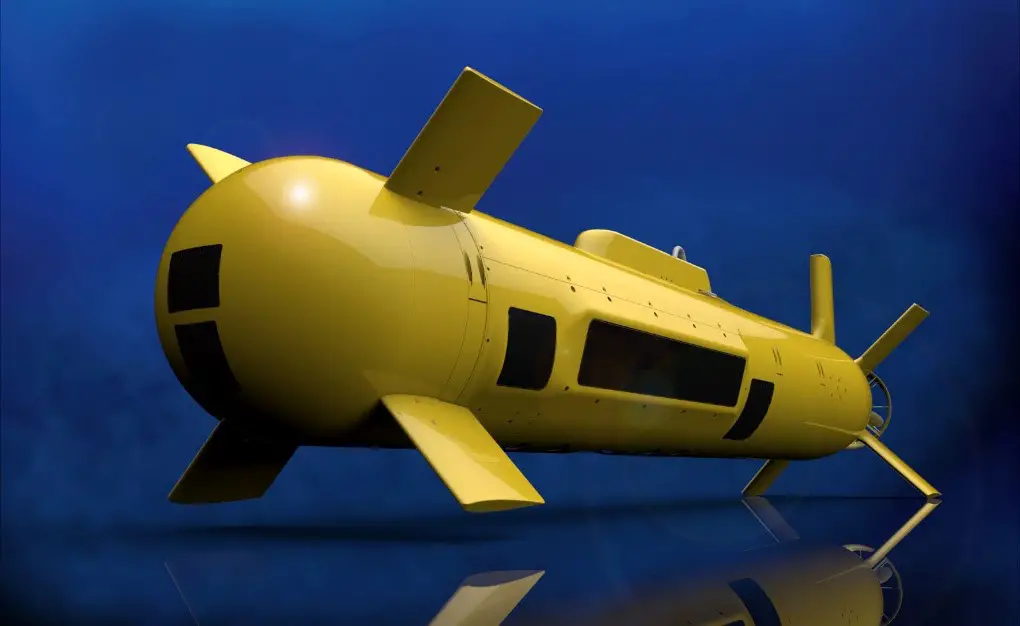Japan’s Mitsubishi Heavy Industries (MHI) is set to deliver its first OZZ-5 mine-countermeasures (MCM) unmanned underwater vehicle (UUV) to the Japan Maritime Self-Defense Force (JMSDF). The JMSDF will operate unmanned surface vessels (USVs) that deploy from the service’s Mogami-class multi-mission stealth frigates. The frigate deploy and recover unmanned underwater vehicles (UUV) from the rear ramp beneath the helicopter deck. Janes reported that the OZZ-5 will be operated by the JMSDF around Japan’s disputed southern islands. The first of five on-order OZZ-5 systems will be supplied to the JMSDF by the end of March. The initial five OZZ-5s are all expected to be delivered by the end of 2024.
The OZZ-5 UUV, which measures 4 m long and 0.5 m wide with a displacement of 950 kg, is equipped with Japan’s NEC-made low-frequency SAS and France’s Thales-made high-frequency SAS combinedly, which is designed to ensure a robust MCM capability for the detection and classification of different mine threats in a range of environments. Japan Maritime Self-Defense Force relies on Thales and MHI to equip itself with the latest generation of high-resolution synthetic aperture sonar that provides a high level of classification. The choice of Thales technologies, which have been extensively proven in service with navies around the world, provides the highest levels of protection available today. This contract agreement is the starting point of a long-term program with Japan Maritime Self-Defense Force as end-user and potentially opens the door to export markets. Through this agreement, HFSAS will be deployed in MHI’s OZZ-5 UUV.
With the combination of the Thales HFSAS with Japanese LFSAS (Low Frequency Synthetic Aperture Sonar) technology, the sonars will allow operators to detect suspected mines regardless of the varied or unvaried condition, accommodating today’s increasing demand for MMCM (Maritime Mine Counter Measures). Thales HFSAS provides AuDC (Automatic Detection and Classification) function, which relieves operators’ load to process the collected data. The continuous and successful collaboration between Thales and MHI in Japan has been, once again, strengthened by the order of SAMDIS HFSAS to equip MHI’s OZZ-5 UUV. Working together with Thales, MHI is aiming to enter new markets in Japan’s allies by offering high-end technology to the most powerful navies. Thales’ anti-submarine warfare and maritime safety & security systems are currently in service with more than 50 navies.











